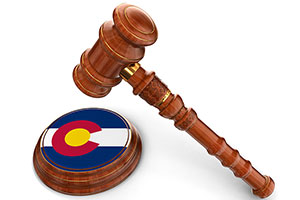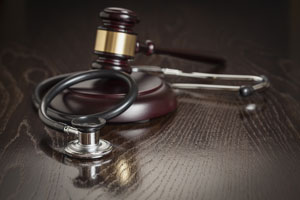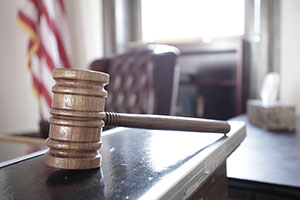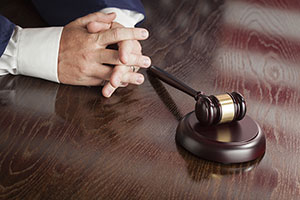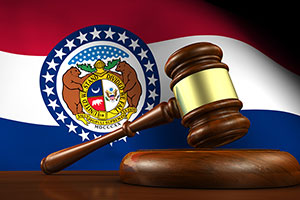A Jehovah’s witness who advised her surgeon that she would not accept a transfusion agreed to the use of a “cell saver” device that recycled her blood. She died from blood loss after a technician refused to use the device in the belief that it had been contaminated.
The issue before the Washington Court of Appeals was whether an anesthesiologist, who apparently had authority over the cell saver device, breached the appropriate standard of care in overseeing how the device was used. The court of appeals decided that the plaintiff’s expert witness failed to articulate a standard of care that established the anesthesiologist’s negligence.
The Cell Saver
Angela Baumgartner was a Jehovah’s Witness. As a matter of religious practice, she refused to accept blood transfusions, but was willing to allow her doctors to use a cell saver device that collects and recycles a patient’s own blood. She gave them explicit instructions not to violate her religious beliefs.
To comply with the beliefs of a surgical patient who is a Jehovah’s witness, any blood that leaves the patient’s body may not be replaced, even with the person’s own blood. According to the court, an exception is made when blood makes a “circuit” by leaving the body and returning to the body without being exposed to the external environment.
A cell saver suctions blood that has entered a body cavity, filters the blood, and stores it in a bag until it is reintroduced to the body through an IV. The IV must create a continuous connection between the patient’s body and the bag that stores the blood. If the IV connection is broken, the cell saver device can no longer be used to return blood to the patient’s body without violating the patient’s religious beliefs. There was evidence before the court, however, that it is acceptable for the suction tube to leave the patient’s body, even if that breaks the “circuit.”
Baumgartner’s Surgery
Baumgartner underwent surgery to remove a small mass from her kidney. The cell saver was attached when surgery commenced. Since laparoscopic surgery was regarded as “minimally invasive,” one question that arose during the litigation was whether it was necessary to attach the cell saver before significant bleeding began.
When the technician operating the cell saver left the operating room for a bathroom break, the surgeon removed the mass from Baumgartner’s kidney. The removal caused heavy bleeding. The cell saver was unable to keep up with the blood loss.
The surgeon had been conducting the surgery with robotic assistance. In light of the emergency, he removed the robotic arms, which caused the suction device to fall on the floor. When the technician entered the operating room, she announced that the suction device was contaminated, and since it had continued suctioning outside the sterile environment, it had likely contaminated the blood in the bag.
The surgeon insisted that the technician replace the contaminated tube and reattach the suction device. The technician refused because she had been trained that once the suction device was removed from the patient’s body, it could not be returned to the body without violating the patient’s religious beliefs. The anesthesiologist, who was behind a surgical curtain and could not see the device, did not overrule that decision.
Surgery proceeded and Baumgartner was rushed to intensive care, having lost about 40{d61575bddc780c1d4ab39ab904bf25755f3b8d1434703a303cf443ba00f43fa4} of her blood. She died from complications associated with blood loss a few hours later.
Medical Malpractice Allegations
Baumgartner’s daughter sued the anesthesiologist, Dr. Mark Morehart, claiming that his negligence caused her mother’s death. In particular, she claimed that Dr. Morehart was negligent in (1) failing to order the cell saver device to be placed on standby before the surgery began, and (2) failing to order the technician to replace the contaminated suction tube in compliance with the surgeon’s wish.
A trial court in Washington granted summary judgment in favor of Dr. Morehart. Baumgartner’s daughter appealed. The appeal turned on expert testimony regarding the standard of care.
Washington law, like the law of most states, requires the plaintiff in a medical malpractice case to prove medical negligence by having an expert testify about the applicable standard of care and the physician’s breach of that standard. Baumgartner’s daughter relied on opinions expressed by Dr. Bruce Spiess. The court described Dr. Spiess as “an anesthesiologist with experience in the beliefs of Jehovah’s Witnesses toward blood in surgery and the use of the cell saver machine.”
Failure to Keep the Cell Saver on Standby
In his deposition, Dr. Spiess testified that it made sense to keep the cell saver on standby because, when blood loss is expected to be minimal, there is no reason to use the cell saver device. Dr. Spiess contended that the cell saver should not be hooked up to the patient unless and until excessive bleeding occurred.
Dr. Spiess was familiar with the medical beliefs of Jehovah’s Witnesses. He testified that keeping the cell saver on standby was consistent with those beliefs, and that the technician who announced that the Jehovah’s Witness protocol required the cell saver machine to be connected to the patient before surgery could begin was mistaken. Dr. Spiess also testified that the standard of care required Dr. Morehart to understand that keeping the cell saver on standby was perfectly acceptable to Jehovah’s Witnesses.
The appellate court accepted Dr. Spiess’ opinions for the purpose of the appeal. The court faulted Dr. Spiess, however, because his “standard of care” testimony focused on what Dr. Morehart should have known, not on what he was required to do. Because Dr. Spiess did not opine that the standard of care required keeping the machine on standby (even if doing so was a good idea), his expert opinion did not establish that Dr. Morehart breached the standard of care.
Failure to Use the Cell Saver After Contamination
Dr. Spiess also opined that Dr. Morehart breached the standard of care by not knowing that Jehovah’s Witnesses would not object to using a replacement suction tube after the original tube was contaminated. Dr. Spiess believed that Dr. Morehart should have corrected the technician when the technician refused to replace the tube.
The court determined, however, that Dr. Spiess identified a standard of care that did not match the facts of the case. While the tube could have been replaced, the technician announced that the blood supply collected by the machine had been contaminated. The court held that “the standard of care when only one component of the cell saver machine is contaminated is immaterial under the facts here.”
Dr. Spiess disagreed that the blood supply was contaminated. He testified that the machine needs to be manually operated in order to suction, and it could not have suctioned after being dropped to the floor. The court disregarded that opinion because the technician announced that the blood supply was contaminated and Dr. Morehart, who was standing behind a surgical curtain and could not see the device, would have no way of knowing that the technician was wrong.
The court’s logic seems a bit fuzzy. If Dr. Morehart should have known how the cell saver works, it isn’t clear why he needed to see it to know that the blood supply would not have been contaminated when the suction device fell to the floor. Apparently (although it is not clear from the opinion), Dr. Spiess did not expressly state that the appropriate standard of care required Dr. Morehart to know how a cell saver works and when a blood supply might be contaminated.
Lessons Learned
The case teaches the lesson that lawyers and experts need to anticipate potential inadequacies in an expert’s opinion and, when the expert is able to do so, must articulate opinions that address the specific facts of the case.
With regard to the standby issue, the court faulted Dr. Spiess for testifying about what Dr. Morehart should have known but not what he should have done. With regard to the contamination issue, Dr. Spiess apparently failed to testify about what Dr. Morehart should have known. In both cases, if Dr. Spiess has expressed his opinions more completely (assuming he could truthfully do so), the outcome of the case might have been different.



